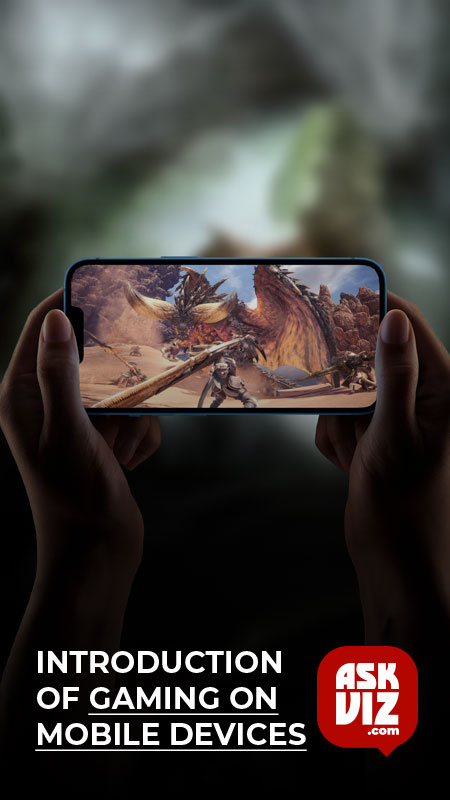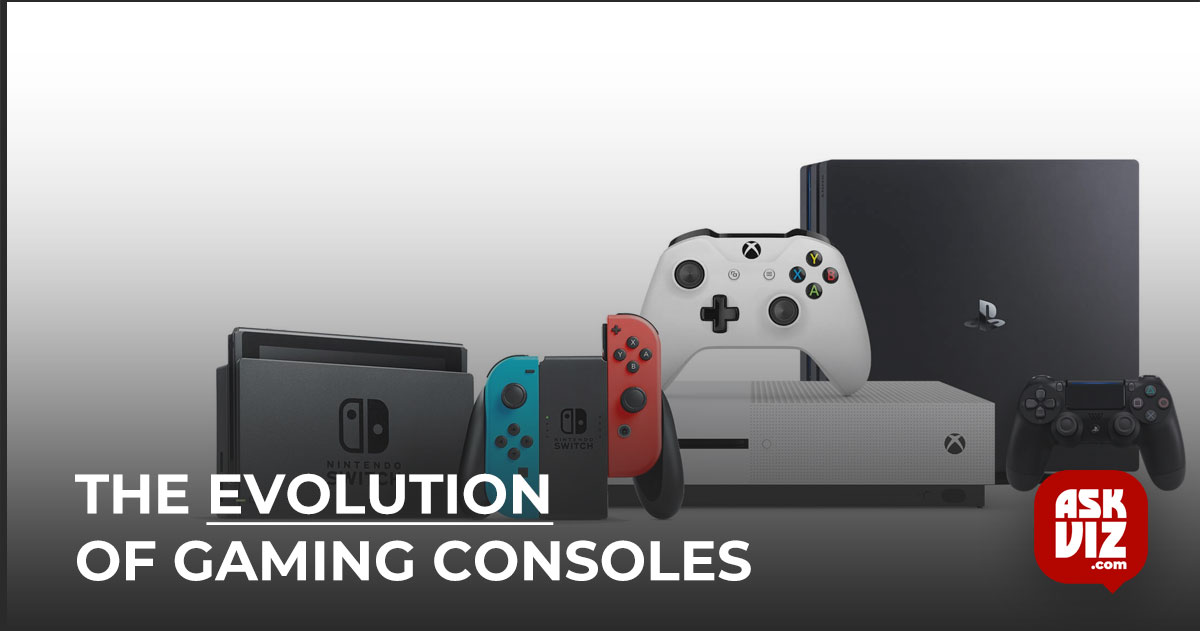The Magnavox gaming consoles company created other video game system versions later in 1975. Around that time, a number of other businesses, including Coleco, Atari, and others, had begun to manufacture gaming systems with titles like Pong, handball, tennis, and hockey. Pong was first created as an arcade game and quickly became popular when it was brought to homes in 1975.
Video games such as Pac-Man, Mario Bros., and Final Fantasy first appeared in the 1980s. These days, a number of video games are consistently added to the gaming system.
The invention of gaming consoles
In general, the first generation of video game consoles available for purchase was created between 1972 and 1978, during which time a number of businesses vied with one another to produce the greatest products on the market. Among the major game consoles produced in these years are the Coleco Telstar systems, Atari Pong, and Magnavox Odyssey.
Up to eleven different games, including football, cat and mouse, hockey, tennis, skates, and roulette, may be played with the Magnavox Odyssey. Nevertheless, the Odyssey Console was designed in such a way that before users could turn the device on, they needed to insert a game.
Sales of the Magnavox Odyssey were reasonably excellent as of the fourth year of manufacturing, however they were less than what the business had anticipated. This resulted from misinformation spread by the media, since intended users were unsure if the Console could be used with TVs of any brand or just TVs made by Magnavox. In light of this, other businesses discovered how important it is to disclose which TV brands their consoles are compatible with.
Pong, an Atari video game console game, debuted in 1975 and featured features not found in other games. A single chip was used in the creation of the Atari Pong gaming system, which enabled visual scoring and sound effects.
Coleco launched its Telstar brand in 1976 and joined the video game console business at the same time that Atari collections gained popularity. Tennis, handball, and hockey were the three games that came with this brand, and most players accepted it. Coleco went on to produce fourteen more consoles under the Telstar brand before stopping in 1978.
Only two of Coleco’s fourteen new consoles—Telstar Combat and Telstar Marksman—were commercially successful.
The heyday of console video games

The early 1980s saw a more sophisticated technological advancement in the gaming sector, which marked the start of the golden age of video game consoles. It was the era of the first video game cartridge system releases and the debut of titles like Pacman, Mario Bros., Final Fantasy, etc.
Sega and Nintendo were the two major brands that controlled the game industry during this time. Before releasing the wildly popular Sega Master System in 1986, Sega produced the SG-1000 as its debut console in 1983. Nintendo debuted the Nintendo Entertainment System (NES) in 1983, a few years prior to the Sega Master System, and it quickly became the best-selling system of the time.
Even though a few other firms introduced new systems during this time, the Sega brand and NES’s competitiveness drove them out of business. As the rivalry persisted, both businesses developed entirely new consoles. Sega debuted the MegaDrive/Genesis in 1989, and Nintendo followed suit with the Super Nintendo Entertainment System (SNES) in 1990. Nevertheless, that same year saw Sega release the Master System II following the popularity of the MegaDrive/Genesis.
Later in 1990, with the release of the Neo Geo Advanced Entertainment System (Neo Geo AES), SNK Neo Geo, a firm not previously involved in the video game console market, entered the market. The brand’s visuals were especially well-received, but many consumers didn’t like how expensive it was.
The advent of CDs and the growth of 3D graphics
Many video game companies switched from using cartridges to store games on compact discs around the start of the 1990s. More powerful gaming systems could now be used, and 3D graphics rather than 2D ones could be viewed.
Although Phillip released the first CD console in 1991, its mediocre games prevented it from becoming widely known. The Hudson Soft-designed TurboGrafx-CD was marketed by NEC Home Electronics in 1989, but it had to contend with the Sega Genesis, which had been out two weeks earlier.
In addition, Atari produced the CD-based Atari Jaguar system in 1993 with the hopes of competing with the SNES and Sega Mega Drive; nevertheless, advancements were achieved when the Sega Saturn and Sony PlayStation were released a year later.
Later, in 1994, the Sony PlayStation with its 3D graphics and CD ROM drive was already available, while Sega debuted its new Genesis 2 and Genesis 3 series in 1994 and 1997, respectively. In addition, I introduced the Saturn console, which was in direct competition with all other consoles available.
Nintendo continued to use its cartridge storage technology even after creating the Nintendo 64. In 1994, SNK Neo Geo also created a CD-based console, although it charged a reasonable price for it in contrast to the 1990 Neo Geo AES.
The advent of virtual gaming

Sony produced the PlayStation 2, which was much more sophisticated than its predecessor, by the year 2000. With games like God of War, Shadow of the Colossus, and other classics, the platform was created with a top-notch graphics DVD storage system and remained popular even after the PlayStation 3 was introduced.
After a year, Nintendo switched to a DVD version of the Nintendo 64 cartridge. At the time, the PS2 and Nintendo 64 both featured some Internet functionality.
Microsoft made their debut in the video gaming market later in 2001 with the Xbox. Xbox Live marked the beginning of online gaming, and the Xbox brought several advancements and improvements to the gaming system.
The Xbox system, which debuted with a built-in hard drive, was designed to compete with the PlayStation 2 right away. Games like Halo, Fable, and Project Gotham Racing were beloved by many players, which helped Microsoft gain recognition in the gaming industry.
Microsoft also unveiled the Xbox 360 in 2005. The system included improved memory and graphics, a more customizable and user-friendly controller, and the option for solo or multiplayer gaming.
Microsoft began pitching their recently launched console as an all-in-one entertainment system in 2013. This gave rise to the Xbox One console name. The console included a single controller, a power cord, and a chat headset for chatting with friends and other gamers around the world. The majority of gaming firms have included internet gaming in their products up until this point.
The controllers used in games have evolved
In the same way that gaming consoles have developed over time, controllers for those systems have also advanced significantly. Magnavox Odyssey provided the original set of controllers, which were two connected analog controllers. Players could control both vertical and horizontal motions while gaming with the buttons and side knobs on each controller.
Players may control their Pong by moving a paddle-like controller up and down thanks to Atari’s subsequent controller development. Joysticks represented a new generation of controllers that emerged in the 1980s. Sega also created a rounder controller in 1988 that included four more buttons, including the start button, along with a directional pad.
Nintendo’s controller from the 1990s was very different from its predecessors. The controller was M-shaped, with three prongs. It also included yellow directional buttons and a directional pad with start buttons. The Dual Shock PlayStation Controller, which Sony first released in 1997, is well-known for vibrating when players interact with the game.
We already had an Xbox 360 in the mid-2000s, and it too included a multicolored directional pad. Not too long after, Nintendo introduced the Wii remote as an alternative controller. Like a TV remote, the Wii remote was portable and had buttons for a speaker, a small power button, and other functions.
Nintendo and a few other video game firms kept coming up with new ideas. They created new gaming controller designs, and in 2020, the Dual Sense was introduced along with the PlayStation 5. This features a directional pad, a center touchpad with lightning that changes according on the game you’re playing, and its basic colors are black and white.
The introduction of gaming on mobile devices

With the release of Tetris on the Hagenuk MT-2000 in 1994, the commercial mobile gaming industry officially began. However, it wasn’t until the renowned Nokia Snake came preinstalled on the 6110 model in 1997 that mobile gaming became widely popular.
The game was everyone’s favorite despite having few features and functionalities. Following Snake’s success, several games of a similar nature were created, although programmers were limited by the lack of advanced hardware. Games like shooters, card games, and racing were nevertheless created in spite of this.
One significant development in mobile gaming was the introduction of Wireless Application Protocol (WAP) service. This service was created to let users connect to the Internet, download games to their phones, and activate multiplayer functionality. Beginning in 2000, Alien Fish Exchange—a networked version of Tamagotchi originally created for interactive television—became a well-liked game in which players could purchase and trade fish with other players via the WAP service.
2001 saw the release of Space Invaders and arcade games on mobile devices. Two years later, color cell phones started to proliferate, and that same year, other racing game companies were established.
When touchscreen iPhones became widely accessible in 2007, mobile gaming saw an even bigger revolution. Soon later, in 2008, the Appstore was introduced, enabling game creators to sell players’ games.
Rovio Entertainment released Angry Birds on the app store toward the end of 2009. The game is entertaining, captivating, and reasonably priced. The game was soon released on Android for free, but users had to pay to get the play screen’s advertisements removed.
The popularity of social networking sites like Facebook contributed to the growth in 2010 of games like Farmville and the release of Candy Crush in 2012. Several other games, such as Clash of Clans and Crossy Road, were also released at this time.
2016 saw further progress in the creation of mobile phones, which changed the landscape of gaming. Using the newest technology, Temple Run, Subway Surfers, and Ingress enhanced their games with new, unique features. Numerous mobile games are still being created and published on the app store today.
The console generation that is currently in use
The Microsoft Xbox Series X/S and PlayStation 5, which were introduced in late 2020, are examples of the current generation of video game systems. When it comes to storage and processing power, these consoles are more sophisticated than their predecessors. Aside from that, their controllers have also been updated, and their graphics processors are generally better, sometimes reaching resolutions of up to 8K.
The next generation of gaming consoles
Many discussions and forecasts have been made about the future of video game consoles. While some anticipate further advances in gaming systems down the road, others predict virtual reality will eventually drive them out of business. While some believe that video game consoles will become extinct due to their vast library of terrible games, others maintain that they will always be a popular choice.
While video game consoles won’t disappear, we should anticipate the addition of new technologies like streaming, virtual reality, and augmented reality. Sony may already stream exclusive titles on PS Now as of right now. We anticipate Microsoft doing the same thing with Xbox Game Pass soon. We may or may not see the gaming boxes, or consoles, that we are used to seeing, but we will still have our standard PC and smartphone games.
Additionally, we should anticipate that businesses like Microsoft, Sony, and Nintendo will keep advancing technology in the gaming sector.
In Conclusion
From the Atari 2600, Nintendo Entertainment System, and Sega MegaDrive eras to the most recent PlayStation 5, the development of video game systems has been a fascinating ride. Even though each of these systems had unique, thrilling qualities, they had also significantly advanced the gaming business.
FAQS
What was the first gaming console?
The Magnavox Odyssey
The Magnavox Odyssey was the first video game console, released in 1972. The first generation of home consoles were generally limited to dedicated consoles with just one or two games pre-built into the console hardware, with a limited means to alter gameplay factors.
How many generations of gaming consoles are there?
Nine generations
Within the home video game console market, the leading consoles have often been grouped into generations, consoles that were major competitors in the marketplace. There have been nine generations of consoles since the 1970s, with a new generation appearing about every five years in accordance with Moore’s law.






